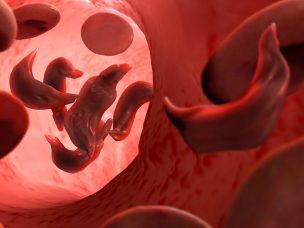ASH 2021
Biotech Company Previews Key Data and Findings for ASH 2021
In preparation for presenting at the 2021 American Society of Hematology (ASH) Annual Meeting and Exposition, biotechnology company Amgen recently shared a preview of the data of a follow-up to a phase 3 trial focused on pediatric patients and the initial safety and efficacy results of the addition of KYPROLIS to the treatment for patients...
Highlights and Notable Events for ASH 2021
The American Society of Hematology (ASH) is returning partially in person for their annual meeting. Held virtually and in Atlanta, GA, the meeting and exposition is poised to continue the connection of healthcare professionals and evolving research in hematology, including key sessions on how COVID-19 impacts the field. At a recent pre-meeting press briefing, representatives...
Differential Gene Expression in Hodgkin Lymphoma
A new study, published in Blood, will be presented at the ASH Annual Meeting & Exposition, analyzing the mRNA of adolescent/young adult survivors of Hodgkin lymphoma (AYAHL) and their twins who were unaffected by the disease to further investigate the transcription control pathways involved. The researchers used blood samples from 17 pairs of AYAHL and their twin,...
Predisposition Genes for Hodgkin Lymphoma Identified
This study, published in Blood, sought to identify predisposition genes for classic Hodgkin Lymphoma (cHL) in adolescents and young adults using germline whole-exome sequencing (WES). It will be presented at the 2021 ASH Annual Meeting & Exposition. The researchers gathered index cases of multiplex families to analyze from twin registries and a cancer surveillance program based...
Follicular Helper T-Cell Markers and Hodgkin Lymphoma
Both angioimmunoblastic T-cell lymphoma (AITL) and peripheral T-cell lymphoma of the TFH phenotype exhibit the expression of follicular helper T cell markers. Differential expression and coexpression of these markers in malignant and benign lymphoid proliferations are not well understood. This study, published in the American Journal of Clinical Pathology, examined the expression of these markers...
Hodgkin Lymphoma With Unusually Abundant B-Cell Markers
Hodgkin and Reed-Sternberg cells originate from germinal center B-cells. These cells tend to lose the B-cell phenotype. However, one-third of classic Hodgkin lymphoma cases express at least one B-cell marker, which can lead to difficulties in distinguishing classic Hodgkin lymphoma from B-cell lymphomas. This case report, published in Clinical Lymphoma, Myeloma, and Leukemia, analyzed a case of...
Nivolumab and the Hodgkin Lymphoma Microenvironment
The resistance and progression of tumors in patients with classic Hodgkin lymphoma is believed at least in part to depend on features of the tumor microenvironment. However, the relationship between malignant Hodgkin/Reed-Sternberg cells, reactive populations, and immune cells is still unclear. This retrospective study, published in Cancers, sought to identify potential predictive and prognostic morphological markers in...
Using miRNA to Determine Treatment Progress in Hodgkin Lymphoma
Although FDG-PET imaging is the gold standard for interim response assessment in patients with classic Hodgkin lymphoma, this technique cannot be performed frequently. This study, published in the Journal of Extracellular Vesicles, examined a minimally invasive way to assess tumor presence and burden using microRNA (miRNA) associated with tumor-secreted extracellular vesicles (EV). The study included 193...
Soluble PD‐L1 and Classic Hodgkin Lymphoma
Among the biomarkers of classic Hodgkin lymphoma are tissue and soluble markers involved in the programmed cell death protein 1/programmed death-ligand (PD-1/PD-L) axis. This study, published in the British Journal of Haematology, sought to determine whether or not plasma levels of proteins in the PD-1/PD-L axis reflect expressions by corresponding tissue. The researchers collected paired tissue...
More Medical News














